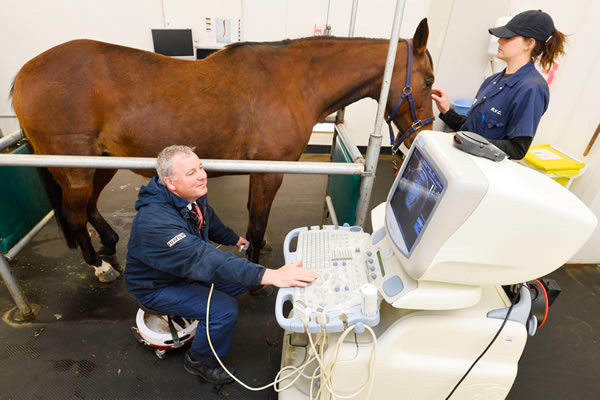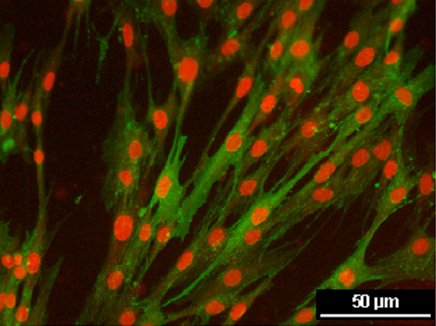24 hour contact: 01707 666297
Equine Stem Cell Therapy Research
RVC - Pioneers of Equine Stem Cell Therapy
Much of the exploration into new treatment options for animal tendon injuries has taken place in the horse. The Royal Veterinary College was the setting of the first use of stem cell therapy for tendon injuries in horses in 2002.
Since then, this technique has spread internationally and progressed to stem cells also being used for equine joint disease treatment. Much of the development has involved the careful assessment of clinical information, rather than using experimentally induced injuries in experimental animals. Stem cell based treatments were developed because traditional treatments had not improved the outcomes of many orthopaedic injuries. This is particularly the case for tendon degenerative disorders which do not regenerate but instead heal with scar tissue such that functionality is not fully restored.
Potential scale of the impact of equine stem cell therapy
The equine population is estimated to be about 800,000 in the UK. Tendon over-strain injuries are the most common orthopaedic injury in all equine disciplines. A quarter of National Hunt racehorses in training have evidence of superficial digital flexor tendinopathy.
Applications and benefits of equine stem cell based treatments
In comparison with established tendon treatments, stem cell based treatments have shown improved outcomes, by halving the re-injury rate in both racehorses and sports horses compared to conventional management. These studies have been performed on a sufficiently large group of clinical cases presenting at equine practices nationally and followed for three years after treatment in order to compare with other treatments with adequate statistical power.
The injury itself only causes pain and lameness for a short period, but recurrent injury is extremely common. This can then result in euthanasia because of the poor prognosis for a successful return to performance.
Based on our studies over the past 18 years, we can justifiably state that cell therapy produces a better quality repair. The mechanism of action has not been completely clarified - but the most evidence is for the modulation of the inflammatory process rather than being truly regenerative. Although stem cell based treatments are safe and efficacious in current analysis of clinical data, full proof would require large numbers treated in a randomised controlled trial, a difficult undertaking in essentially private medicine where the owner determines the choice of treatment.

Advances in equine stem cell technology

Further advances in stem cell technology to improve efficacy continue to be made. As well as evidence of success with equine patients, positive effects with small animals and non-equine large animals have been reported.
Commercially available cell preparations are either minimally-manipulated stem cells recovered directly from their tissue of origin or enriched through culture in the laboratory, before reimplantation into the injured tissue.
Minimally-manipulated stem cell preparations may be whole bone marrow, bone marrow aspirate concentrate (BMAC), or the stromal vascular fraction made from fat (without undergoing further growth and expansion in numbers in the laboratory). Enriched stem cell products may be MSCs derived from bone marrow, fat tissue, blood or other mesenchymal tissues that have been expanded in the laboratory.
Experience at The Royal Veterinary College suggests that the preparation process has a greater influence on the nature of the product than tissue source does, although there is currently no data comparing different products.
Positive potential for other species
Stem cell based techniques used in horses are being translated in pilot studies into treatment of human tendon injuries, where injuries associated with athletic activity and ageing frequently occur in both species and thus have close similarities. There is greater potential for companion animals where the total UK population of dogs and cats is around nine million in the UK. Supraspinatus tendinopathy in dogs is common and trials show positive outcomes in the US. The prevalence of hip and elbow osteoarthritis arthritis is 6.6% increasing to >10% in some purebred dogs and this is a potential new area for development of the treatment.
Stem cell based treatments for equine joints
The value of equine stem cell therapy for joints appears to be more limited than in tendon injuries. This is because there is limited adherence to cartilage.
However, stem cells do engraft into the synovium and other soft tissues of the joint may still be able to modulate inflammation and repair which would significantly contribute to management of the disease and patient mobility and comfort. The treatment may be most appropriate for intrasynovial soft tissue lesions such as meniscal tears.
Tendinopathy
This video shows work inspired by research at the RVC and won first prize at the Orthopaedic Research Society (ORS) Media Outreach Awards.
The video was produced by Jan Barfoot (MRC Centre for Regenerative Medicine in Edinburgh - www.crm.ed.ac.uk) and Ryan Lewis (ScideLight - www.scidelight.com).

